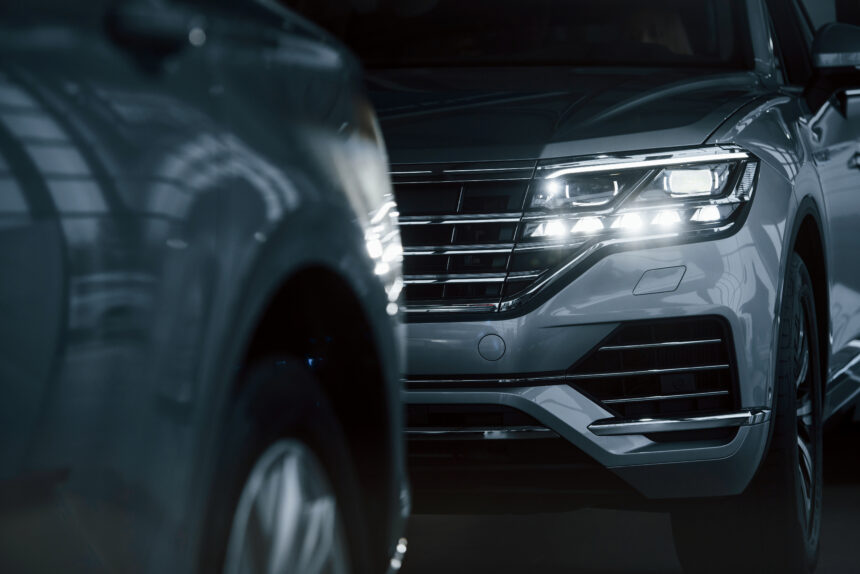Used car checklist 2025 — if you’re shopping pre-owned this year, bring this step-by-step guide with you. It’s practical, quick to scan at the lot, and built to help you skip lemons, negotiate with confidence, and keep total cost of ownership under control.

How to Use This Used Car Checklist 2025
Go section by section. You don’t need to be a mechanic. Most items are simple visual or “feel” checks. If anything looks off, note it and ask the seller for documentation, a price adjustment, or to fix it as a condition of sale. When in doubt, book a trusted pre-purchase inspection.
Part 1 — Quick Scan (5 minutes)
- Walk-around, 2 meters back. Look for mismatched paint, panel gaps, clouded headlights, drooping bumpers.
- Tire tread & age. Uneven wear suggests alignment or suspension issues. DOT date older than 6 years? Budget for replacement.
- Glass & lights. Chips in the windshield, cracks in lenses, moisture inside lights.
- Key fobs & locks. Do all keys work? Remote lock/unlock? Replacements can be pricey.
- Odor test. Musty = possible leaks. Strong air freshener can be a cover-up.

Part 2 — Body & Frame (10 minutes)
- Panel alignment. Sight along doors and fenders; big gaps or waves can signal accident repairs.
- Paint consistency. Overspray on rubber or chrome points to respray. Use it to negotiate, not necessarily to walk away.
- Rust hotspots. Wheel arches, door bottoms, trunk lip, under spare tire, suspension mounts. Surface rust can be treated; structural rust is a red flag.
- Underbody glance. If safe, peek under the car: damaged shields, dripping fluids, bent components.
- Hinges & seals. Open/close doors, hood, trunk. Check weather seals for tears and water marks.
Part 3 — Engine Bay & Fluids (10 minutes)
- Oil level & color. Dark isn’t always bad, but metallic sparkle or milkiness is.
- Coolant level. Should be between marks, typically bright (not brown). Dried pink/white crust can hint at slow leaks.
- Belts & hoses. Squeeze for suppleness; look for cracks, swelling, or leaks at clamps.
- Battery health. Corrosion on terminals? Ask age of battery.
- Cold start. Engine should fire quickly and settle. Knocking, rattling, or hunting idle needs diagnosis.

Part 4 — Cabin & Electronics (10 minutes)
- All windows & mirrors. Test each switch and folding/heating functions.
- Infotainment. Bluetooth pairing, CarPlay/Android Auto, USB ports, backup camera.
- HVAC. Heat and A/C should blow strong; funky smells can mean a clogged cabin filter or moisture.
- Driver assist. Try cruise control, parking sensors, lane/blind-spot alerts where safe.
- Odometer & warning lights. At ignition, all icons should light, then go out after start.

Part 5 — Test Drive (15–20 minutes)
- Straight tracking. On a flat road, the car should not pull left/right; steering wheel centered.
- Braking. Smooth, straight stops with no pedal pulsation or grinding noises.
- Transmission behavior. Automatic shifts should be clean and timely; manuals shouldn’t grind and the clutch should engage mid-travel.
- Suspension & noises. Over bumps, listen for clunks. Vibrations at certain speeds can be tires, wheels, or axles.
- Heating/cooling while moving. Some issues only appear once the car is under load.
Part 6 — Paperwork & History (before you commit)
- VIN check. Verify the same VIN on windshield, door jamb, and documents. Run a recall/status search: NHTSA Recall Lookup (U.S.), GOV.UK MOT history (U.K.).
- Service records. Look for regular oil changes and major intervals (timing belt, transmission fluid, spark plugs).
- Ownership & title. Confirm the seller is the legal owner; avoid “title jumping.”
- Accident disclosure. Ask directly and request invoices/photos of repairs if any.
- Keys & accessories. Two keys? Owner’s manual? Winter mats? Spare tire and jack?
Part 7 — Brakes, Tires & Wheels (deeper dive)
- Brake rotors & pads. Feel for a lip on the rotor edge; look through spokes if possible.
- Parking brake. Should hold the car on an incline without pulling hard.
- Spare tire & kit. Is the spare inflated? Tools present?
- Tire brand match & sizing. Mixed brands can be fine, but identical sets are a good sign of care.
- Wheel damage. Bent or cracked rims can cause persistent vibrations.

Part 8 — Underside & Leaks (if you can)
- Park & idle, then move the car. Look for fresh drips (oil/coolant/transmission).
- Exhaust. Excessive rust or black soot at joints suggests leaks.
- CV boots & axles. Torn boots fling grease; clicking in turns points to worn joints.
- Shocks/struts. Oil on the body of the shock indicates failure.
- Mounts. Excessive engine movement when revved in neutral = tired mounts.
Part 9 — Electronics & Safety
- All safety systems. Airbags (warning light behavior), ABS, stability control.
- Driver aids. Adaptive cruise, lane keep, blind-spot, rear cross-traffic. Test and confirm no error messages.
- Headlights & beams. High/low beams, fogs, auto lights, and aim against a wall at night.
- Wipers & washers. Replace blades if streaky; check rear wiper on hatchbacks/SUVs.
- 12V outlets & chargers. Confirm power for navigation/phones.
Part 10 — Pricing & Negotiation
- List your findings. Create a mini “punch list” with estimated costs (tires, brakes, battery, fluids, alignment).
- Benchmark price. Compare similar listings by year, trim, mileage, and condition—not just asking price.
- Use specifics. “Rear tires at 3 mm, battery from 2019, A/C weak” is more persuasive than “needs work.”
- Don’t skip the pre-purchase inspection. A shop’s 1-hour look can save thousands.
- Be ready to walk. The best leverage is the willingness to find a better car.
Expert Extras: Make Your Used Car Checklist 2025 Even Stronger
- Always verify recalls free by VIN on the NHTSA site (U.S.). In the U.K., check MOT history and advisories via GOV.UK. In the EU, review safety ratings with Euro NCAP and in the U.S. with IIHS.
- Scan for codes. If the seller agrees, an inexpensive OBD-II scan can reveal stored faults before warning lights appear.
- Insurance reality check. Get a quote based on the VIN; some trims cost more to insure than you’d expect.
- Total cost of ownership. Price the next 12 months: tires, brakes, fluids, registration, and any deferred maintenance you identified.

Common Red Flags (and What to Do)
Fresh undercoating or heavy engine bay degreaser. Could be cosmetic—or hiding leaks/rust. Ask for “before” photos or walk away.
Inconsistent VINs or missing stickers. The VIN on the dash should match the door jamb and the title. Mismatch? Stop the deal.
Reset warning lights. If lights never turn on at ignition, bulbs or clusters may have been tampered with. Get an inspection.
“Cold AC” but weak airflow. Often a blower or cabin filter issue; small fix, but negotiate.
Internal Resources (keep readers on-site)
- Car Insurance 2025: Smart Tips to Lower Your Premium
- Hybrid vs Electric 2025: Which Fits Your Life?
- Electric Car Buying Guide 2025
- Budgeting Made Easy: A Step-by-Step Guide
Authoritative External Sources
- NHTSA — Official VIN Recall Lookup (U.S.)
- GOV.UK — Check MOT History (U.K.)
- IIHS — Vehicle Safety Ratings (U.S.)
- Euro NCAP — Latest Safety Ratings (EU)
Final word: A disciplined used car checklist 2025 won’t just protect your wallet; it makes you a calmer buyer. Document what you see, verify what you can’t, and pay only for the car in front of you—not the one in the ad.






